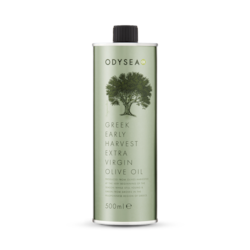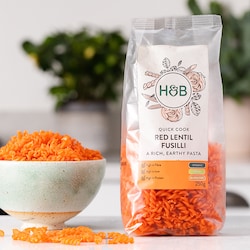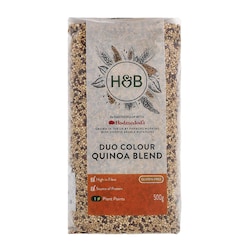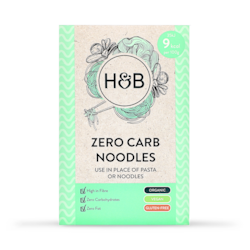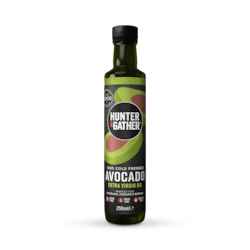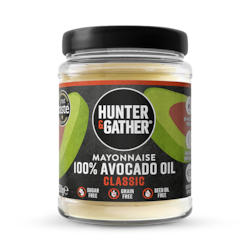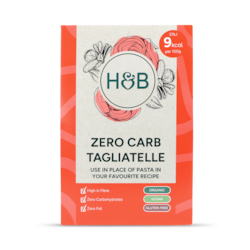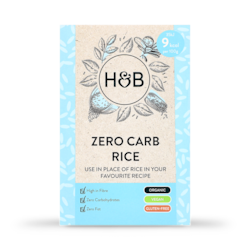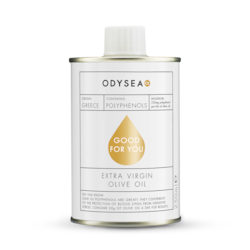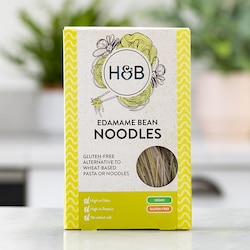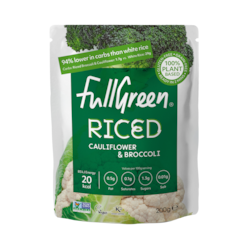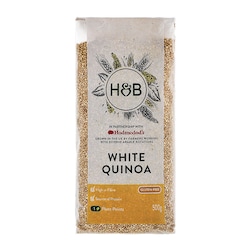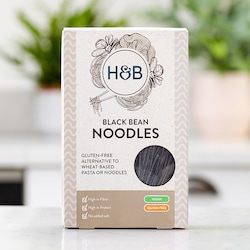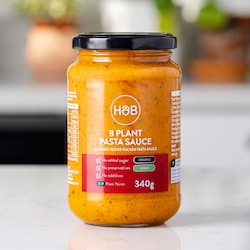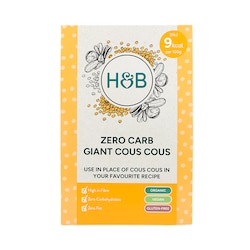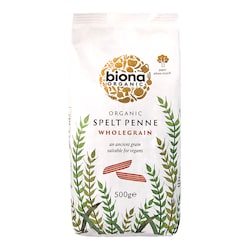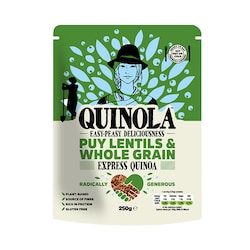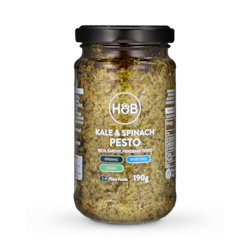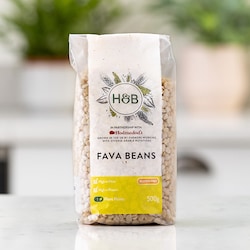15% off £30 OR 20% off £40
Types of grains: A-Z list & benefits
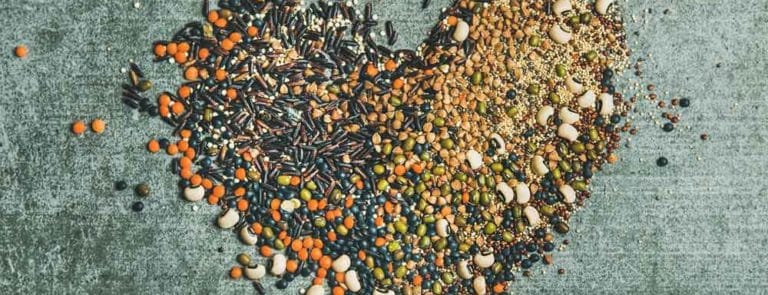
Because not all grains were created equal.
Ancient grains are enjoying a moment in the spotlight.
From sorghum and teff to amaranth and freekeh, these superfoods are loaded with more fibre and protein than everyday grains, and come with a huge helping of vitamins, magnesium, potassium and antioxidants to boot (many are gluten-free too).
The only question you should be asking is why wouldn't you give them a go?
In this article, we’ll explore:
- What grains are
- What super grains are
- The different types of grains
- If all grains are suitable for everyone
- How to incorporate more grains into your diet
What are grains?
Most grains are members of the Poaceae family and basically include any type of food that is made from wheat, rice, oats, cereal grain, cornmeal or barley.
Some of the most common foods that are made from grains include bread, pasta, cereals, popcorn and rice.1
What are super grains?
But what about super grains?
Otherwise known as ancient grains, super grains are a type of grain that have a great nutritional profile and promote some more health benefits over regular grains.
Some of the key super grains include amaranth, sorghum grains, buckwheat, chia, farro, freekeh and teff.
16 types of grains
-
Amaranth grains
In 100g of amaranth grains, there is approximately:2
- 371 calories
- 13.6g of protein
- 65.2g of carbohydrates
- 6.7g of fibre
Key benefits:
- Naturally gluten-free
- Source of vitamin C
- High in protein
- Rich in antioxidants (gallic acid and vanillic acid)
-
Sorghum grains
In 100g of sorghum grains, there is approximately:3
- 329 calories
- 10.6g of protein
- 72.1g of carbohydrates
- 6.7g of fibre
Key benefits:
- Naturally gluten-free
- A rich source of magnesium
- High in fibre
- High in protein
-
Buckwheat grains
In 100g of buckwheat, there is approximately:4
- 343 calories
- 13.2g of protein
- 71.5g of carbohydrates
- 10g of fibre
Key benefits:
- Naturally gluten-free
- Rich in fibre which may aid digestion
- Low to medium GI, generally safe for type 2 diabetics5
- Key source of antioxidants like rutin
-
Farro grains
In 100g of farro grains, there is approximately:6
- 311 calories
- 13.3g of protein
- 66.6g of carbohydrates
- 6.7g of fibre
Key benefits:
- Naturally high in fibre
- Contains a range of antioxidants
- High in protein
- Low GI
-
Freekeh grains
In 100g of freekeh grains, there is approximately:7
- 352 calories
- 12.5g of protein
- 60g of carbohydrates
- 11.2g of fibre
Key benefits:
- High in fibre
- Low GI
- Rich source of antioxidants
- Aids muscular growth due to glutamic acid contents
-
Teff grains
In 100g of teff grains, there is approximately:8
- 367 calories
- 13.3g of protein
- 73.1g of carbohydrates
- 8g of fibre
Key benefits:
- Naturally gluten-free
- Contains 8 different amino acids9
- High in vitamin C
- A good source of protein
-
Barley grains
In 100g of hulled barley, there is approximately:10
- 354 calories
- 12.5g of protein
- 73.5g of carbohydrates
- 17.3g of fibre
Key benefits:
- Packed with antioxidants
- Source of soluble fibre
- May increase ‘good’ cholesterol11
- Rich in magnesium
-
Bulgur grains
In 100g of bulgur, there is approximately:12
- 342 calories
- 12.3g of protein
- 75.9g of carbohydrates
- 12.5g of fibre
Key benefits:
- A great source of fibre
- Plant-based source of iron
- High in antioxidants13
- Slow release source of carbohydrates
-
Corn grains
In 100g of white corn grains, there is approximately:14
- 365 calories
- 9.4g of protein
- 74.3g of carbohydrates
Key benefits:
- Source of key B vitamins
- Contains antioxidants that promote eye health (lutein and zeaxanthin)15
- High in magnesium
-
Einkorn grains
In 100g of einkorn, there is approximately:16
- 327 calories
- 9.6g of protein
- 63.4g of carbohydrates
- 7.7g of fibre
Key benefits:
- Less allergenic source of wheat17
- Naturally high in protein
- Lower in calories than other grains
-
Millet grains
In 100g of millet, there is approximately:18
- 378 calories
- 11g of protein
- 72.8g of carbohydrates
- 8.5g of fibre
Key benefits:
- Rich in antioxidants and phenolic compounds
- Good source of fibre
- Low GI
- Naturally gluten-free
-
Oats
In 100g of oats, there is approximately:19
- 389 calories
- 16.9g of protein
- 66.3g of carbohydrates
- 10.6g of fibre
Key benefits:
- Rich in antioxidants, including avenanthramides which are only found in oats20
- High in soluble fibre
-
Quinoa grains
In 100g of quinoa, there is approximately:21
- 368 calories
- 14.1g of protein
- 64.2g of carbohydrates
- 7g of fibre
Key benefits:
- High in protein
- Good source of fibre
- Naturally gluten-free
-
Brown rice
In 100g of long grain brown rice, there is approximately:22
- 367 calories
- 7.5g of protein
- 76.2g of carbohydrates
- 3.6g of fibre
Key benefits:
- Lower GI than white rice
- Naturally gluten-free
- Source of antioxidants23
-
Rye grains
In 100g of rye grains, there is approximately:24
- 338 calories
- 10.3g of protein
- 75.9g of carbohydrates
- 15.1g of fibre
Key benefits:
- Very rich in fibre
- Low GI
- High in potassium and sodium
- May have an antioxidant effect
-
Spelt grain
In 100g of spelt grains, there is approximately:25
- 338 calories
- 14.6g of protein
- 70.2g of carbohydrates
- 10.7g of fibre
Key benefits:
- Rich in fibre
- A good source of iron
- Low to medium GI
- High in B vitamins
Are grains suitable for everyone?
While a lot of the grains we’ve discussed have a range of health benefits and a good nutritional profile, they’re not necessarily suitable for everyone.
For example, people who have Coeliac disease or a wheat allergy may not be able to eat some of the grains we’ve listed.
In addition to this, some grains have a high glycemic indexic, meaning that they’re not suitable for people with diabetes.
And lastly, people with Crohn’s disease may want to avoid certain grains that are high in fibre, as this could make their symptoms worse.26
How to incorporate more grains into your diet
Incorporating more whole grains into your diet doesn’t have to be hard.
You could start by making some swaps, like porridge for breakfast instead of sugary cereal or choosing rye bread over white bread.
Also, it can be fun to experiment with different kinds of grains in your day to day meals. For example, using quinoa instead of white rice.
Another way to incorporate healthy grains into your lifestyle is to snack on them too!
Homemade popcorn is a great way to do this, as you can control the added ingredients to ensure they’re still a healthy snack.
Super grains highlights
Eat for vit C
Amaranth: This favourite of the Aztecs springs from a different plant species than most grains, but has similar nutrients.
Gluten-free, it holds more than six times the calcium of average grains, is high in iron and magnesium, and is one of the rare grains containing vitamin C (it’s also one of the few that’s a complete protein).
Used as a cereal or ground into flour, it cooks much more quickly than many grains.
Eat for antioxidants
Sorghum: The fifth most-produced grain in the world, sorghum’s free from gluten, and bursting with vitamins and minerals.
It boasts more antioxidants than superfoods such as pomegranates and blueberries (yes, really!) and contains high levels of magnesium, which helps with calcium absorption – which is vital for keeping bones and teeth in tip-top condition.
Eat to help regulate blood sugar
Buckwheat: Forget the name – buckwheat’s related to rhubarb (not wheat, those cheeky monkies…) and it’s 100 per cent gluten-free.
It’s from the seeds of a flowering plant, which are pounded down to make buckwheat flour.
High in copper, manganese and protein, this is a great wholegrain if you’re managing sugar levels, thanks to its high soluble fibre, slowing down the rate at which you take in glucose.
Like amaranth, this is another one of those complete proteins, as it’s packed with all the amino acids too.
Eat to raise energy levels
Chia: Chia seeds were another one of the Aztecs’ BFs – they even considered it more valuable than gold!
Its Mayan name means “strength”, and it’s loved by athletes, as the Tarahumara (a Mexican tribe of the world’s greatest long-distance runners) swear by it for their success.
Chia’s a fantastic source of nutrition for vegan, gluten-free and fully raw diets, as it’s one of the best-known non-animal sources of protein and omega-3.
Eat to support immunity
Farro: Like many of the other ancient grains, farro is an excellent source of fibre, and plant-based protein – twice the amount as quinoa, to be precise.
It’s not gluten-free but is high in antioxidants and it’s suggested it may help boost immunity, lower inflammation, and regulate blood sugar and cholesterol levels.
Farro was even discovered in the tombs of Egyptian royalty (well, if it’s good enough for them…).27
Eat for a happier gut
Freekeh: This Biblical grain is similar to brown rice, but has up to three times the level of protein and fibre – a super grain indeed!
It’s also high in calcium, potassium, iron and zinc. Wholegrain freekeh has a low GI-level which is great for anyone trying to keep their blood sugar steady.
To top it off, it’s thought to boost the growth of good bacteria in your gut. Time to get your freekeh on, we say.28
Eat for stronger bones
Teff: This Ethiopian favourite is super-rich in calcium, boasting the highest level of any grain. Teff is also a good source of iron, manganese, thiamine and vitamin B6.
Gluten-free, it’s packed with niacin and thiamin.
It’s also full of essential amino acids and high in resistant starch, which can help blood-sugar management, weight control, and colon health.
The final say
Time to think cereal-ously about switching to ancient grains.
There are a wide variety of grains for you to choose from, so we hope we’ve highlighted some of the best ones to fit into your diet.
If you’re not sure about including a certain grain in your diet if you have a pre-existing condition that could be affected, it’s best to speak to a medical professional before making any radical changes.
Handpicked content: How to cook grains
Last updated: 1 September 2021
- https://www.myplate.gov/eat-healthy/grains
- https://fdc.nal.usda.gov/fdc-app.html#/food-details/170682/nutrients
- https://fdc.nal.usda.gov/fdc-app.html#/food-details/169716/nutrients
- https://fdc.nal.usda.gov/fdc-app.html#/food-details/170286/nutrients
- https://glycemicindex.com/gi-search/
- https://fdc.nal.usda.gov/fdc-app.html#/food-details/1547225/nutrients
- https://fdc.nal.usda.gov/fdc-app.html#/food-details/1813976/nutrients
- https://fdc.nal.usda.gov/fdc-app.html#/food-details/169747/nutrients
- https://academic.oup.com/ajcn/article-abstract/16/3/315/4787344
- https://fdc.nal.usda.gov/fdc-app.html#/food-details/170283/nutrients
- https://pubmed.ncbi.nlm.nih.gov/14963054/
- https://fdc.nal.usda.gov/fdc-app.html#/food-details/170688/nutrients
- https://www.goodto.com/food/is-bulgur-wheat-healthy-nutrition-facts-health-benefits-588486
- https://fdc.nal.usda.gov/fdc-app.html#/food-details/168920/nutrients
- https://www.aoa.org/healthy-eyes/caring-for-your-eyes/diet-and-nutrition?sso=y
- https://fdc.nal.usda.gov/fdc-app.html#/food-details/1600610/nutrients
- https://pubmed.ncbi.nlm.nih.gov/16161773/
- https://fdc.nal.usda.gov/fdc-app.html#/food-details/169702/nutrients
- https://fdc.nal.usda.gov/fdc-app.html#/food-details/169705/nutrients
- https://www.ncbi.nlm.nih.gov/pubmed/19941618
- https://fdc.nal.usda.gov/fdc-app.html#/food-details/168874/nutrients
- https://fdc.nal.usda.gov/fdc-app.html#/food-details/169703/nutrients
- https://www.ncbi.nlm.nih.gov/pmc/articles/PMC6025443/
- https://fdc.nal.usda.gov/fdc-app.html#/food-details/168884/nutrients
- https://fdc.nal.usda.gov/fdc-app.html#/food-details/169745/nutrients
- https://www.crohnsandcolitis.org.uk/about-crohns-and-colitis/publications/food
- www.draxe.com/farro/
- www.thebetterindia.com/74447/ancient-grains-nutrition-india-world/


